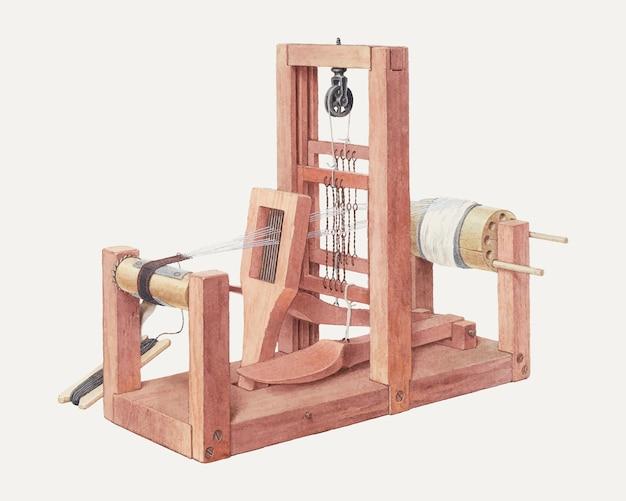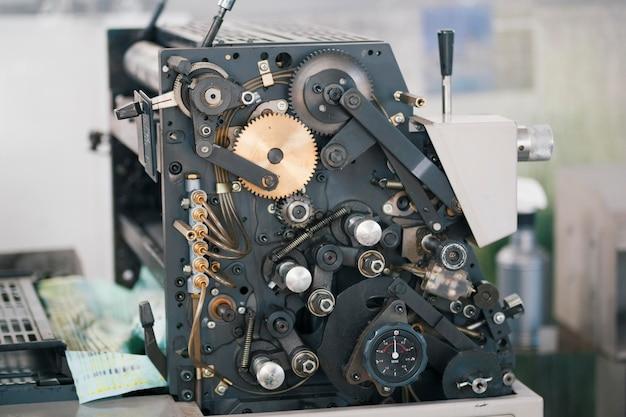Imagine a world without the printing press. It’s hard to fathom, isn’t it? The printing press, invented by Johannes Gutenberg in the 15th century, played a pivotal role in spreading knowledge and ideas during a time known as the Renaissance. This era, characterized by an explosion of creativity, art, and intellectual curiosity, transformed Europe in countless ways. But how exactly did the printing press contribute to this cultural rebirth?
In this blog post, we’ll explore the significant impact of the printing press on the Renaissance. We’ll delve into why its invention took so long, examine how it helped facilitate the spread of the Renaissance and the scientific revolution, and investigate its influence on education. The printing press changed the world in unimaginable ways, and we’ll uncover its secrets together. So let’s embark on this journey to uncover how the printing press revolutionized the spread of the Renaissance.

How the Printing Press Catapulted the Renaissance to New Heights
The invention of the printing press in the 15th century was like throwing a match into a pile of fireworks: it ignited a printing revolution that propelled the Renaissance forward at warp speed. So, how exactly did this marvelous machine help spread and shape the Renaissance? Let’s dive right into the marvelous mechanisms that made it all possible!
1. Easing the Reproduction Rampage
In the days of yore, books were painstakingly written by hand, limiting their availability to only the elite and the extremely patient scribes. The printing press, however, changed the game by allowing multiple copies of books to be produced faster than you can say “Gutenberg.” Suddenly, knowledge was no longer the exclusive domain of the nobility and monks, but became accessible to the masses, setting off an intellectual chain reaction.
2. Unleashing the Written Word
With the printing press’s ability to churn out books like hotcakes, a staggering array of written material suddenly flooded the market. Scholars, thinkers, and dreamers had their ideas immortalized in ink and distributed widely. This proliferation of ideas led to a cascading effect, fueling discussions, inspiring new thoughts, and pushing the boundaries of knowledge. The printing press effectively became the rocket booster of ruminations.
3. Bandwagoning the Scientific Revolution
The Renaissance was a time of great scientific discovery and progress. The printing press played a pivotal role in this scientific revolution by enabling the rapid dissemination and sharing of scientific findings. New theories and groundbreaking experiments were no longer confined to the dusty shelves of private libraries and academies, but instead, they were passed around like juicy gossip amongst the scientific community. This accelerated the pace of scientific advancement, forging ahead with the determination of a cheetah in pursuit of its prey.
4. Spreading the Seeds of Democracy
The arrival of the printing press also nurtured the seeds of democracy. Previously, information was controlled by the ruling class, but now, with books spreading like wildfire, ordinary folk could educate themselves and engage in informed debates. This newfound access to knowledge gave rise to a desire for self-governance and individual freedoms. The printing press injected democracy into the Renaissance like a spark of inspiration, igniting a fervor for change.
5. Catapulting the Arts
Ah, the arts, the heart and soul of the Renaissance! The printing press provided artists with a means to reproduce their masterpieces and share them far and wide. Paintings, illustrations, and sculptures spilled out from the presses, inspiring both established artists and budding talents. With their work immortalized in print, artists gained visibility and recognition, paving the way for the artistic explosion that characterized the Renaissance.
In Conclusion
The printing press acted as a catalyst, propelling the Renaissance to unparalleled heights. By democratizing knowledge, spreading ideas, advancing science, fostering democracy, and amplifying the power of the arts, this magical machine shaped the course of history. So, let’s raise our metaphorical quills to Johann Gutenberg and his marvelous invention, for without him, we might still be scribbling away in the dark ages. Long live the printing press!

FAQ: How Did the Printing Press Help Spread the Renaissance?
Welcome to our comprehensive FAQ-style guide on how the printing press played a pivotal role in the spread of the Renaissance. In this informative and entertaining section, we’ll address some of the most commonly asked questions about the impact of the printing press during this transformative period in history. So grab a cup of coffee, sit back, and prepare to have your curiosity satisfied!
What Would Happen if the Printing Press Was Never Invented
If the printing press was never invented, we would likely still be living in a world with limited access to knowledge and information. The mass production of books made possible by the printing press revolutionized the spread of ideas, leading to increased literacy rates and the democratization of knowledge. Without this revolutionary invention, the Renaissance and the subsequent Enlightenment period might have been delayed or even stifled. So, we owe a big thank you to Johannes Gutenberg for bringing the printing press into our lives!
How Did the Printing Press Help Spread the Renaissance
The printing press acted as a catalyst for the spread of the Renaissance in multiple ways. Firstly, it allowed for the mass production of books, making knowledge and ideas more accessible to a wider audience. Prior to this invention, books were painstakingly copied by hand, making them incredibly expensive and limited in availability. The printing press changed all of that by enabling faster and more affordable production.
Secondly, the printing press facilitated the dissemination of classical texts, sparking a renewed interest in ancient Greek and Roman knowledge. Scholars could now produce accurate and consistent copies of these texts, leading to a revival of classical ideas and philosophies. This newfound access to ancient wisdom fuelled intellectual curiosity and paved the way for the innovative thinking that defined the Renaissance.
How Did the Printing Press Help in the Spread of the Renaissance and Scientific Revolution
The printing press played a significant role in both the spread of the Renaissance and the subsequent Scientific Revolution. As mentioned earlier, it allowed for the dissemination of knowledge and ideas on a much larger scale, encouraging collaboration and the exchange of new scientific discoveries. Scientists and scholars could now easily access and build upon the work of their predecessors, accelerating the pace of scientific advancement.
Furthermore, the printing press empowered scientists to share their findings with a wider audience, as they could now publish their research in books and journals more efficiently. This not only increased the visibility of their work but also encouraged further experimentation and innovation, shaping the foundations of modern scientific inquiry.
Why Did It Take so Long to Invent the Printing Press
Good things take time, don’t they? The invention of the printing press was no exception. Although human beings have been yearning to share their knowledge and stories since the dawn of time, it wasn’t until the fifteenth century that Johannes Gutenberg came along and brought our dreams of mass communication to life.
Gutenberg faced numerous challenges along the way, from developing the right combination of movable metal type to perfecting the printing process. It’s worth noting that technological advancements often build upon the work of those who came before, and Gutenberg’s innovation was no different. His invention drew inspiration from existing printing techniques in China and Korea, but he added his own unique touch that truly revolutionized the world.
What Impact Did the Printing Press Have on Education
The impact of the printing press on education cannot be overstated. Prior to its invention, education was largely a privilege reserved for the wealthy elite. Books were scarce and expensive, making them inaccessible to the majority of the population. With the advent of the printing press, however, books became more affordable and readily available.
This accessibility led to a surge in literacy rates as more people had the opportunity to learn to read and write. It also democratized education, breaking down barriers and allowing individuals from all walks of life to pursue knowledge. The printing press paved the way for the establishment of schools, the development of standardized textbooks, and the spread of learning across continents. Without it, education as we know it would be a very different story.
How Did the Printing Press Change the World
In a word, the printing press changed the world by empowering the masses. It obliterated the barriers that had separated individuals based on their access to information. With the printing press, knowledge and ideas could spread like wildfire, transcending borders and social classes. It revolutionized communication, giving a voice to those who had previously been silenced.
The printing press was the spark that ignited the Renaissance and subsequently set the stage for the Enlightenment. It fueled revolutions, advanced scientific discovery, and inspired generations of thinkers and inventors. Its impact on the world as we know it is immeasurable, and we owe a debt of gratitude to this humble invention that transformed the course of history.
We hope this FAQ-style guide has shed light on the crucial role played by the printing press in the dissemination of knowledge during the Renaissance. From the mass production of books to the democratization of education, this revolutionary invention revolutionized society and paved the way for the modern world. So, the next time you pick up a book or marvel at the wonders of scientific progress, take a moment to appreciate the printing press and its profound impact on our lives.
